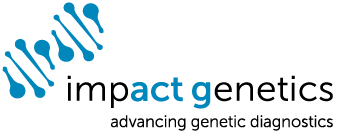
Retinoblastoma Sample Preparation
Sample Requirements
For US customers please note that If sending extracted DNA for analysis please ensure that DNA sample is provided from a CLIA-certified laboratory or a laboratory meeting equivalent requirements as determined by the CAP and/or the CMS.
Proband:
- Blood or DNA from blood.
- Tumor sample if available (fresh or frozen).
Unilateral proband with no family history:
- Both blood sample and fresh or flash-frozen tumor sample are necessary for complete analysis.
Pre/peri-natal sample options:
- Cultured amniocytes
- Direct amniotic fluid
- DNA extracted from amniocytes
- CVS tissue
- DNA extracted from CVS
- Cord blood.
Maternal blood or DNA from blood (required for all pre/perinatal samples, to be submitted at same time or prior to procedure).
Genetically related family member for known mutation:
- Blood or DNA from blood;
- Or buccal swab (select cases only, contact lab directly to confirm if appropriate sample).
If genetic testing has been performed at a lab other than Impact Genetics, please provide copy of relative report.
Sample Preparation Instructions
Blood samples for DNA:
- 10 mls in yellow-topped ACD tubes or lavender-topped EDTA tubes (for infants 2-5 mls in pediatric or small tubes) at room temperature, to be received within 5 days after
draw.
DNA from blood:
- DNA concentration—100 nanograms/microliter
- DNA quantity—150 microliters
Blood samples for RNA:
- 10 mls in lavender-topped EDTA tubes (for infants 2-5 mls in pediatric or small tubes) on 4°C cool packs, to be received within 48 hours after draw.
Buccal swab:
- Kit available upon request (select cases only contact lab directly to request); follow included instructions.
Amniocytes:
- Two T25 flasks of cultured amniotic cells or DNA extracted from amniotic cells at room temperature (100 nanograms/microliter: minimum 20 microliters)
Direct amnio:
- As much volume as possible in conical tube at room temperature, to be received within 48 hours after draw.
CVS:
- Send CVS tissue in sterile tissue-culture medium at room temperature or DNA extracted from CVS tissue at room temperature (100 nanograms/microliter: minimum 20 microliters).
Fresh tumor in medium
(instructions for enucleating surgeon or pathology lab):
-
After removal of an eye containing retinoblastoma,
- Cut off optic nerve and retain as separate specimen for pathology lab.
- Open globe by pupillary-optic nerve section as in routine eye pathology.
- Excise or scoop the bulk of the tumor from inside the eye, leaving tumor-optic nerve and tumor-choroidal relationship undisturbed for pathological evaluation.
- Place fresh retinoblastoma tumor in a sterile tissue culture media, such as RPMI or Alpha MEM with antibiotic added (100U/ml penicillin and 100ug/ml streptomycin) and seal container securely with parafilm.
- Tumor may be kept at room temperature until it is ready to be shipped. DO NOT FREEZE tumor in tissue culture.
- Retain the remainder of the eye for pathology.
- Send tumor sample at room temperature.
Frozen tumor sample preparation:
- Flash freeze tumor sample and ship on enough dry ice to keep frozen for maximum transit time.
Sample Identification
- Use Impact Genetics stickers, or your own to label each sample with at least two patient identifiers (e.g. name and date of birth).
◀ Retinoblastoma Forms || Retinoblastoma Shipping Information ►

